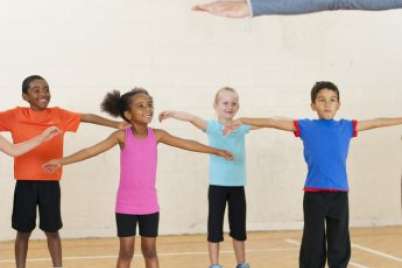
Roundup of Canadian physical literacy programs in schools
Children spend a lot of time in school. Therefore, it’s imperative that schools have a physical literacy program in place. A good physical literacy program means that schools are striving to improve the many facets of a student’s health, such as their emotional, physical, cognitive, and behavioural health. I think it’s important that we highlight the great physical literacy programs in Canadian schools to congratulate the schools that are doing a good job and to inspire others to follow suit. In this article, I want to highlight one school per province and territory that have an interesting physical literacy program.
British Columbia, Farm Roots Mini School
Every second day, students leave the traditional classroom to go learn at the Farm Roots Mini School. This provides hands-on learning to the students. They are responsible for running a sustainable agriculture business. If you’ve spent an entire day in a garden you know that this is hard work. It’s not traditional fitness, but gardening and farming does improve your health. Not only does it help your fitness capabilities, spending time in a garden and in nature improves your wellbeing. Let’s not forget that eating real food that you grow yourself will always be healthier than store-bought processed food. These students are learning life skills that they can keep for their entire lives.
Alberta, Julia Kiniski School
This school likes to think outside of the box when it comes to keeping their students healthy and active. They created a partnership with Alien In-Line to teach the students how to in-line skate. The school offers Zumba to get kids moving and improving their movement repertoire. They also offer a running club and intramurals because they believe in promoting daily physical activity and healthy living. I’m a big fan of the non-traditional approach and exposing our students to an assortment of physical activity opportunities.
Saskatchewan, Confederation Park Community School
At this school, students can take body breaks. Sitting for hours is tough on the body and the brain. The physical education teacher, Jeff Marshall, allows students to enter the gymnasium and do a workout. This allows them to self-regulate. Once they’re ready, students can then go back to their classrooms ready to learn. The gymnasium looks like a Crossfit gym. Students can lift weights, slam medicine balls, and flip tires. I absolutely love the layout of this gymnasium. This resembles real life, you can go to the gym when you want to or need to.
Manitoba, Gillam School
The variety of physical activity being offered at this school amazes me. This was the first time that I’ve seen an ice fishing derby at a school. Students can also participate in a variety of northern games. This allows the students to play games their ancestors once played and to take part in many cultural opportunities. Physical activity that is connected to something bigger, like culture, is what physical literacy is about. Of course we move to stay healthy, but the movement needs to be more than just physical exertion. If you make it relevant to the student’s life and experiences, the greater the odds they will stay active for life.
Ontario, École élémentaire et secondaire Rivière Rideau
Students at École élémentaire et secondaire Rivière Rideau, have the opportunity to learn in nature where they can run in the forest, climb trees, and create and play games outside. They can play with sticks to stimulate their imagination, build forts, and lift heavy rocks to naturally improve their physical literacy. They can also balance on tree trunks and create their own swings. They are spontaneously working on their ABCs of movement (agility, balance, coordination, and speed) while learning and enjoying nature.
Québec, École secondaire du Triolet
Skateducation and École secondaire du Triolet teamed up to offer a very unique option to their sport-études program. Students can now learn how to skateboard or improve their existing skateboarding skills. They can skateboard indoors or outdoors. I’m assuming it’s hard to find a teacher that can teach students how to skateboard and that’s why they partnered with Skateducation. This could be an interesting option to get all students moving. Some students do not enjoy traditional physical education and this could get them active throughout the day.
Enjoy part two as we explore the other provinces and territories. Until then, please share other schools that could have easily made this list. So many schools are doing great things for their students. We are truly lucky to be Canadian!






In Aurora, Ontario Activate Aurora uses physical literacy as a foundation for developing skill and activity in our Activate Aurora Schools. Through a unique teacher-mentoring Program, that has been enabled with our partnerships with Sport for Life, the Mayor’s Task Force on Physical Activity and the Ontario Trillium Foundation, we are engaging physical education consultants in both School Boards who then work within the elementary schools to develop teacher skills in both physical education classes and within each classroom during Daily Physical Activity (DPA). Skilled teachers who use physical literacy development principles build movement competence and confidence in students that encourages increased physical activity and enhances well-being.
That’s great news. Thanks for sharing with us. If done correctly, QPE and DPA are game changers.